Dry bags are an essential part of outdoor life. They are used to safely store and transport your stuff around. Your outdoor gear is protected from moisture and organized neatly.
With its versatility and durability, a dry bag is an essential piece of equipment for any outdoor enthusiast!
In addition to different sizes, thicknesses, weights, designs, materials, and colors, each dry bag has its own level of waterproofness, intended use, and price.
Let’s explore more about what is a dry bag used for. This guide will explore 17 different approaches to utilizing your dry bags in the most efficient ways.
What Is a Dry Bag?
An essential outdoor gear, a dry bag is an airtight and waterproof bag commonly used to keep your belongings dry and safe. This can be incredibly useful for camping, kayaking, and other outdoor adventures where you may encounter water or wet conditions.
Dry bags are typically made from a strong material like nylon. They have roll-down tops which allow you to easily adjust the size and capacity of the bag.
There are different types of dry bags, such as barrel roll top bags, holdball dry bags, backpack dry bags, kayak dry bags, cycling dry bags, first aid dry bags, and more.
How Does A Dry Bag Work?
Now, let’s dive into the technical aspects of dry bags and how they work. Dry bags are typically made up of two layers: an outer layer, usually a waterproof material like nylon or vinyl; and an inner layer that is made of tough fabric, such as canvas or Cordura.
The combination of these two layers creates a barrier between the outside environment and the items stored inside.
Water cannot seep through this barrier because it has been sealed shut with either special buckles or roll-top closure systems.
Dry bags also have padded shoulder straps for added comfort when carrying them for extended periods of time.
This can be especially useful when carrying heavier items such as camping gear or personal belongings on long hikes.
What Is a Dry Bag Used for?
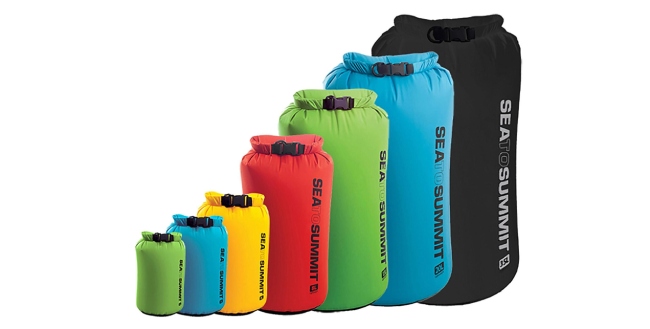
Many people think dry bags can easily be replaced by freezer bags or wet bags. But you won’t get the high water resistance that dry bags feature.
This is because dry bags are specifically made to keep water and moisture away from your belongings. Whether you are carrying sensitive electronics, valuables, or smelly objects, a dry bag is the best thing you can opt in for. They are easy to carry and provide excellent moisture protection.
Dry bags also often feature adjustable straps to carry comfortably on your back or over your shoulder.
They come in all sizes and shapes, but their primary purpose is to safeguard your essentials from water and moisture. Here are 17 of the most common (some are more common than others!) dry bag purposes you can achieve.
1. To keep things dry
If your daypack (or travel bag) doesn’t have a waterproof liner, keep a dry bag in your luggage or car in case of rain.
In addition to being highly space-efficient, it is also convenient to use as a liner.
2. For packing cubes or organizers
Dry bags lie flat when empty and take up very little space, which is excellent for storage. Packing cubes help organize and protect things.
Different colored sacks are easier to distinguish, so you can easily organize your belongings.
3. When there’s no place to dry clothes
Generally, there is no time to dry wet swimsuits or damp travel towels when you’re traveling, right? Well, you can use a dry bag here as well.
Pack wet/damp items in a dry bag to separate them from everything else. That way, the moisture of the wet/damp items will be contained and won’t transfer to the other items in your bag.
That’s why dry bags are great for beach trips, rafting, and any water-related activity.
4. As a bucket
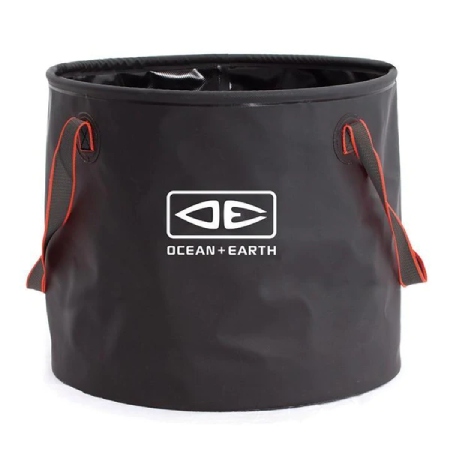
This is one weird but practical tip. As the dry bag doesn’t allow any moisture to pass through, it can also be used as an emergency bucket. For example, you can use it to bring water back from the stream to the camp.
With a dry bag, you can transport almost any liquid item. However, be careful about hot liquids, as they can melt the material of your bag.
When water cannot enter a dry bag, it cannot leave either. A dry bag can be used as a bucket if you need to move or transport water, for example, cool cans or bottles of drinks with a dry bag full of ice.
5. For creating additional storage space
The roll-top closure on dry bags makes them simple to attach to bags or backpacks. A large dry bag can be attached to the top or bottom of a backpack or travel bag by
The roll-top closure on dry bags makes them simple to attach to bags or backpacks by clipping the interlocking buckle to the external attachment point. This can provide extra space to store items while still keeping them dry.
The large size also provides additional protection from rain, snow, and other elements that could cause damage to the contents of a bag or backpack.
Smaller dry bags can be used inside a larger bag or on top of a backpack for convenience.
6. As a makeshift pillow or cushion
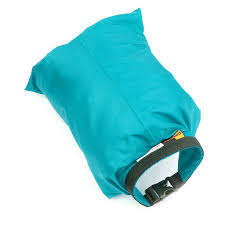
The air should be sealed by rolling the opening a few times before clipping the buckle.
You should be able to use it as a pillow for several hours. Alternatively, you could stuff the dry bag full of sweaters to get even better cushioning.
7. To wash clothes
This is another of the not-so-common uses for a dry bag. Using soap added to water in the dry bag, you can wash your camping/hunting clothing and small accessories.
Agitate the dry bag to move clothes around, shake them, then rinse. However, be careful about washing fragile things. There are better ways to do that.
8. As a soap bar case
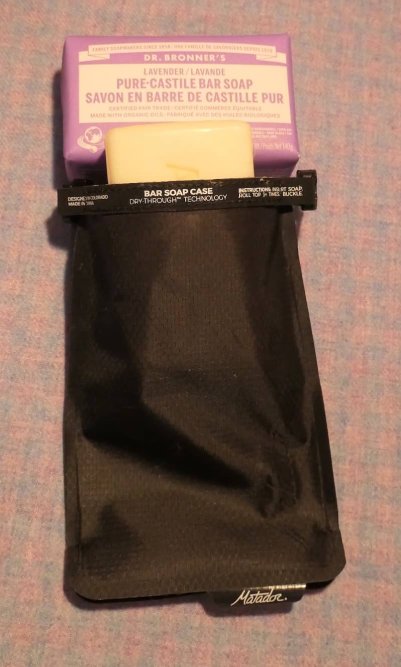
The waterproof, breathable material keeps liquid as the soap dries through the fabric.
If you put the soap in wet, it will be dry by the time you need it. Ventilated soapboxes do not work as well as drybags in this manner.
9. Rucksack dry bags
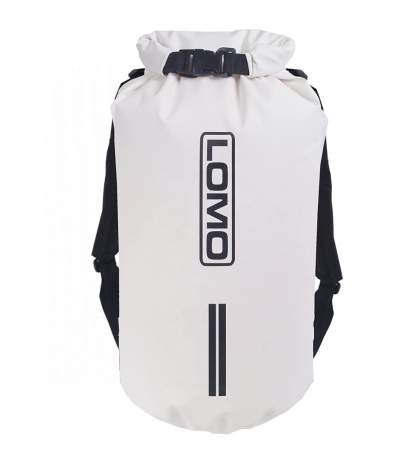
These are larger, heavier-duty dry bags designed to be worn as a rucksack or carried over the shoulder. Rucksack dry bags provide protection from the elements while keeping your items organized and secure and can be used for day trips, camping, rafting, fishing, etc.
Those who walk in the mountains use them instead of rucksacks and find that their gear remains dry after a day of hiking in the rain.
10. Barrel roll-top dry bags
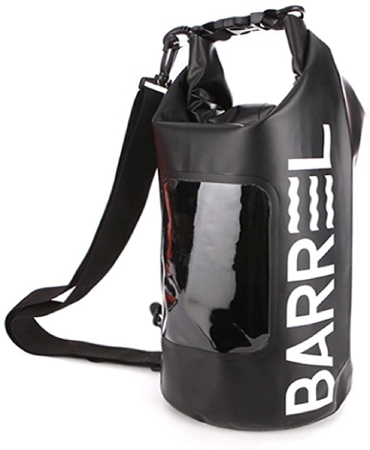
These are larger, bulkier dry bags for storing more substantial items such as sleeping bags and camping gear. In general, barrel-shaped dry bags tend to be more common. They have one cylinder-shaped end that is open.
This type is popular for use during sailing. The barrel shape allows it to stand up on its own when placed vertically and makes it easy to fill with bulky items.
It also keeps your things organized, as the adjustable dividers provide an internal pocket perfect for smaller items.
11. Motorcycle dry bags
Motorcycle dry bags are specifically designed to be mounted directly onto a motorcycle. They provide extra storage and protection for long rides and keep your items dry even in the heaviest rain. The outer layer is bright and reflective, increasing visibility at night.
The shape and size of these bags are designed for maximum aerodynamics and maneuverability. Motorcycle dry bags come with special features like waterproof roll-top closures.
12. Odor Container
You can use dry bags to store smelly items such as wet clothes, dirty diapers, and even fish. The large opening on the top makes it easy to access items without having the smell escape.
Another plus is that the dry bag will remain odorless no matter how smelly your items become. This makes it the perfect choice for storing smelly items during a trip or at home.
Roll the stinky bag up, clip it closed and toss everything into it. With the tight seal, no stinky smell will escape. Is is especially useful to control odor in your car.
13. Safe Electrical Storage
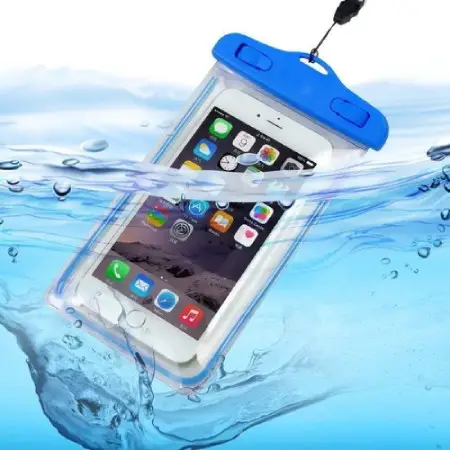
Dry bags offer protection for portable electrical devices and their accessories.
The waterproof nature of the bag will prevent any water damage from occurring to your expensive equipment, even if you are caught in a downpour. You can also use it to store chargers, phones, tablets, cameras, or other items that could otherwise be damaged by rain or damp environments.
Dry bags are made of durable material, so you don’t have to worry about things sticking through. They also make it convenient to store cables together.
14. Bikepacking dry bags
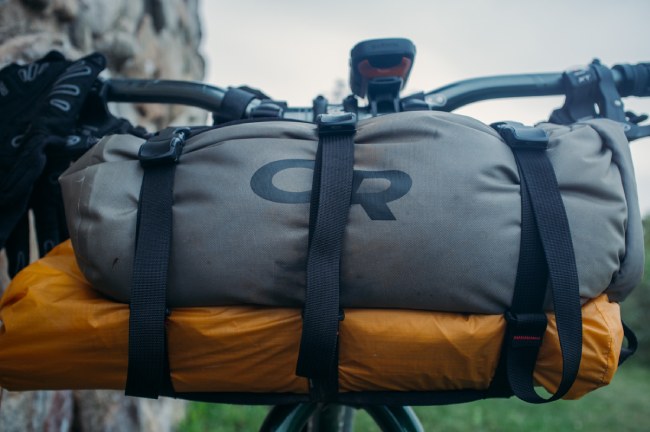
A backpacking trip is aimed at people who enjoy mountain biking and want to tour on their bikes.
As a cross between cyclists and backpackers, bikepackers will want to transport their gear on their bikes. This will allow them to traverse rough terrain faster than a typical pannier setup.
These are smaller, lighter, dry bags designed for bikepacking. They provide protection from the elements and keep your items organized and secure.
The lightweight fabric allows them to be strapped on a bike frame or seat post without weighing you down during long rides. Bikepacking dry bags come in various shapes and sizes, so you can store everything you need on the go.
15. First aid dry bags
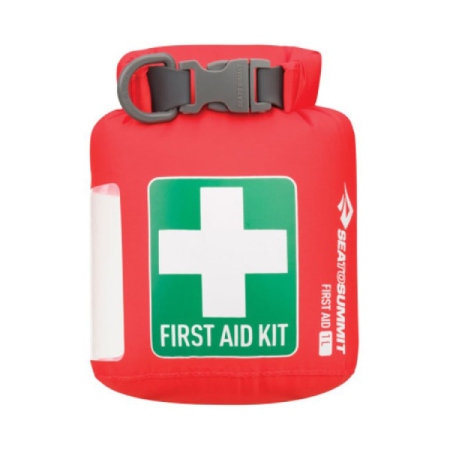
First aid dry bags provide waterproof protection for smaller items such as bandages, medicines, tweezers, and other essential medical supplies.
These bags are perfect for keeping your first aid kit organized and safe from water damage and are used in many official sports events across the world.
The first aid kits are waterproof and have the logo on the front, so everyone knows exactly which bag contains the medical supplies.
16. Dry bum bag
Dry bum bags are great for keeping your wallet, phone, and other personal items safe from water damage when you’re out and about.
The adjustable waist strap makes it easy to secure the bag while keeping your hands free. You can use these if you need to keep some essential items close at hand.
Many other uses include sailing and motorcycling. Many people use them to keep their keys and phones close.
17. Kayak dry bags
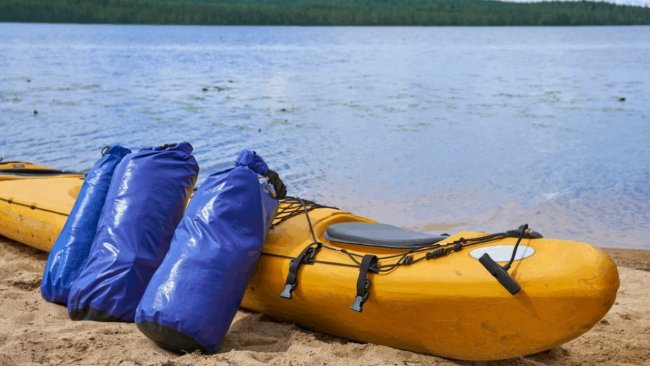
Kayaking, particularly sea kayaking, requires dry bags almost as a necessity.
Kayak dry bags are designed to fit securely in the kayak while providing waterproof protection for your items. These bags come in various sizes and can have different compartments to keep your belongings organized and secure.
Many boats do not have completely dry hatches. Securing your gear in dry bags and storing them in the hatch will help ensure that your gear is still dry when you arrive at your destination.
What Size Bag Do You Need?
Now that you have a clear idea of what are dry bags used for, let’s explore the best dry bag options for you so that you can add a layer of convenience to your everyday activities.
5-liter Dry Bag
Among all sizes, this is one of the most popular. It is still small enough to pack in your backpack despite its size.
The 5-liter dry bag is perfect for smaller items such as sunglasses, sunscreen, and wallets. This size can easily fit into a larger backpack or bag for extra protection from water and dirt.
Rolled up, you can fit a few. The size of this bag allows you to carry a camping stove and a larger camera with ease.
I recommend picking a dry bag with a capacity of 5 liters to start off with. Then, the 5-liter dry bag will still be helpful even if it turns out to be too small for the current purpose.
10-liter Dry Bag
The 10-liter dry bag is great for keeping clothes and small supplies organized while keeping them dry. This size is perfect for day trips and short hikes.
20-Liter Dry Bag
The 20-liter dry bag is great for larger items such as sleeping bags, extra clothes, and even a small laptop. This size can easily be carried over the shoulder or attached to a backpack.
30-liter Dry Bag
The 30-liter dry bag is larger than the 10 and 20-liter sizes and can provide enough room to store all of your supplies for multiple days. This size is perfect for camping, rafting, kayaking, fishing, and other extended activities.
It is about the size of a children’s backpack. It will be cumbersome when hiking with only one shoulder strap. If you have a lot of gear and want to stay organized, consider two or three 10-liter bags.
Ideally, a dry bag of 30 liters can hold all your camping gear and leave a little room for luxuries.
Tips for using a dry bag
- Before you leave, make sure you pack everything into dry bags, so you know where everything is and ensures what you want in them actually fits.
- Dry sacks can also be purchased for larger electronic devices, such as computers.
- Put different things in different colored bags.
- Only properly closed bags are waterproof. Ensure that you don’t overfill roll-top bags so that you can roll them three times
- For zipper-sealed bags, ensure you have zippered the entire length of the bag for zipper bags!
- If you wear gloves, consider rolling down dry bags as zippers are hard to fumble around with when using gloves
- Leave a quarter empty in the dry bag to make sure you can roll it closed properly
And with that, we’ve completed our journey for today. This guide tried to answer the question “what is a dry bag used for” in 17 different methods. There are countless other uses of dry bags, but this guide covers the most basic ones.
Hope the information this guide provided will be helpful to you. Thanks for reading this far. I wish you all a great weekend ahead!
FAQs
Q. Why should I use a dry bag over freezer bags?
Ans. Dry bags are much more durable than freezer bags and provide better waterproof protection. Additionally, dry bags come with straps that make it easy to carry your items while keeping them secure.
Q. How Long Do Dry Bags Last?
Ans. Dry bags can last years, depending on the type of material and how often it is used. Generally speaking, a good-quality dry bag should last at least one year of regular use.
Q. Are Dry Bags Machine Washable?
Ans. Most dry bags are not machine washable, as the heat from a washing machine can damage the waterproof material. Instead, it is recommended to use a damp cloth with mild soap to clean the dry bag.

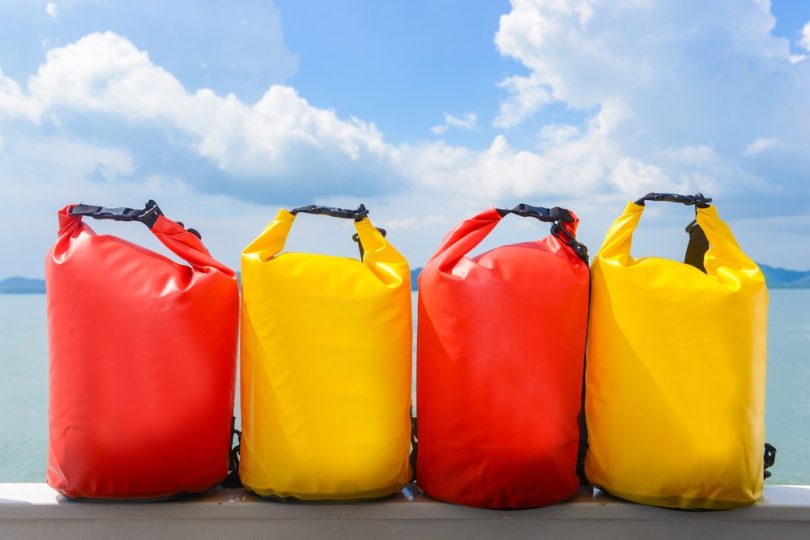







Leave a Comment